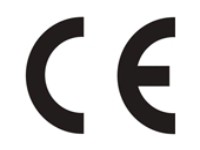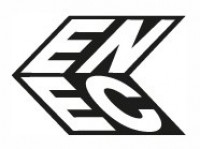Europe

Countries:
European Union (EU), Greece, Netherlands, Norway, Germany, Latvia, Romania, Luxembourg, Lithuania, Liechtenstein, Malta, Belgium, Bulgaria, Sweden, Switzerland, Spain, Slovakia, Slovenia, Iceland, Ireland, Estonia, United Kingdom, Austria, Italy, Czech Republic, Croatia, Cyprus, Turkey, Portugal, Poland, France, Finland, Hungary
CE Certification is given to products which meet all requirements of the European standards related to safety, health, environment and consumer protection guidelines. Consumer safety products distributed within the European Union must be certified and also attach the CE mark.
The CE mark does not mean to guarantee the quality of the product but to confirm the basic safety conditions (essential requirements) are met. In addition, as long as this mark is attached, it is flexible in the distribution within the EU.
Target Products:
1) EMC (Electromagnetic Compatibility Directive): All Electric and Electronic products under Electromagnetic Waves Guidelines
2) LVD (Low Voltage Directive): Electrical and electronic devices applicable to AC 50V-1000V / DC75-1500V under safety guidelines
3) RED(Radio Equipment Directive): All radio devices under the guidelines for radio devices and telecommunication equipment
4) MD(Machinery Directive): General industrial machines (semiconductor equipment, excavator mount accessories, CNC lathe, industrial compressor, industrial hoist, industrial printer, etc.)/ Hazardous machinery (Annex IV) (Lifts, press, plastic/rubber injection machines, circular saw, safety component, etc)
5) MDR(Medical Device Regulation): Medical device regulation has changed from MDD to MDR and now applied to all medical devices (however the following list are not applicable; In vitro diagnostic devices (IVDs), implants, medicine, cosmetic products, Personal Protective Equipment and human blood, plasma, cells, body extracts, and animal tissues.
6) PED(Pressure Equipments Directive): Pressure equipment guidelines include vessels, steam generators, piping, safety equipment accessories, pressure equipment accessories, Assemble Flanges, nozzles, couplings, supports, lifting lugs, etc.
7) ATEX(ATmosphere EXplosible)(Directive): Explosion-proof electrical machinery/device and parts used in explosive environments
8) RoHS(Directive Recast): Based on the maximum permissible concentration of hazardous substances, almost all electrical and electronic devices such as medical devices, industrial devices, monitoring and control devices, etc.
9) WEEE(WEEE Directive Recast): Guideline for mandatory recycling of broken/unused home appliances through the Open Scope method (e.g. Large Equipment, Small Equipment, etc.) in fact all electrical and electronic products.
10) Etc. : All products sold in the EU region (automobiles, measuring instruments, toys, elevators, gas appliances, personal protective equipment, building materials, IED) must be certified according to each guideline.
European Union (EU), Greece, Netherlands, Norway, Germany, Latvia, Romania, Luxembourg, Lithuania, Liechtenstein, Malta, Belgium, Bulgaria, Sweden, Switzerland, Spain, Slovakia, Slovenia, Iceland, Ireland, Estonia, United Kingdom, Austria, Italy, Czech Republic, Croatia, Cyprus, Turkey, Portugal, Poland, France, Finland, Hungary
CE Certification is given to products which meet all requirements of the European standards related to safety, health, environment and consumer protection guidelines. Consumer safety products distributed within the European Union must be certified and also attach the CE mark.
The CE mark does not mean to guarantee the quality of the product but to confirm the basic safety conditions (essential requirements) are met. In addition, as long as this mark is attached, it is flexible in the distribution within the EU.
Target Products:
1) EMC (Electromagnetic Compatibility Directive): All Electric and Electronic products under Electromagnetic Waves Guidelines
2) LVD (Low Voltage Directive): Electrical and electronic devices applicable to AC 50V-1000V / DC75-1500V under safety guidelines
3) RED(Radio Equipment Directive): All radio devices under the guidelines for radio devices and telecommunication equipment
4) MD(Machinery Directive): General industrial machines (semiconductor equipment, excavator mount accessories, CNC lathe, industrial compressor, industrial hoist, industrial printer, etc.)/ Hazardous machinery (Annex IV) (Lifts, press, plastic/rubber injection machines, circular saw, safety component, etc)
5) MDR(Medical Device Regulation): Medical device regulation has changed from MDD to MDR and now applied to all medical devices (however the following list are not applicable; In vitro diagnostic devices (IVDs), implants, medicine, cosmetic products, Personal Protective Equipment and human blood, plasma, cells, body extracts, and animal tissues.
6) PED(Pressure Equipments Directive): Pressure equipment guidelines include vessels, steam generators, piping, safety equipment accessories, pressure equipment accessories, Assemble Flanges, nozzles, couplings, supports, lifting lugs, etc.
7) ATEX(ATmosphere EXplosible)(Directive): Explosion-proof electrical machinery/device and parts used in explosive environments
8) RoHS(Directive Recast): Based on the maximum permissible concentration of hazardous substances, almost all electrical and electronic devices such as medical devices, industrial devices, monitoring and control devices, etc.
9) WEEE(WEEE Directive Recast): Guideline for mandatory recycling of broken/unused home appliances through the Open Scope method (e.g. Large Equipment, Small Equipment, etc.) in fact all electrical and electronic products.
10) Etc. : All products sold in the EU region (automobiles, measuring instruments, toys, elevators, gas appliances, personal protective equipment, building materials, IED) must be certified according to each guideline.

ENEC: European Norms Electrical Certification
ENCE is Europe’s Safety mark. Under the request of the European Manufacturers Association, ENCE was created through the agreement with the European testing and certification centers that electrical products must meet the safety requirements in a unified way across Europe.
The ENEC mark is a mark of conformity agreed by the Member States of the European Community for a significant part of electrotechnical products; this mark certifies compliance with certain European safety standards.
Unlike CE certification, it is not mandatory but the ENEC certification gives an advantage when entering the market and is required in some industries.
Target products:
Lighting, office equipment, components, etc.
ENCE is Europe’s Safety mark. Under the request of the European Manufacturers Association, ENCE was created through the agreement with the European testing and certification centers that electrical products must meet the safety requirements in a unified way across Europe.
The ENEC mark is a mark of conformity agreed by the Member States of the European Community for a significant part of electrotechnical products; this mark certifies compliance with certain European safety standards.
Unlike CE certification, it is not mandatory but the ENEC certification gives an advantage when entering the market and is required in some industries.
Target products:
Lighting, office equipment, components, etc.

ErP Energy-related Products Directive
ErP is Europe’s Energy certification system.
It mandates environmental design for energy-related products and prohibits products from entering into the EU when it doesn’t meet the eco-friendly standards.
The ErP is a combination of the product design guideline EEE (Electrical and Electronic Equipment, EU Ministry of Environment) and guideline for energy efficiency improvement the EER (Energy Efficiency Requirement, EU Ministry of Industry), covering all stages from product design from production, transportation, to packaging for minimizing the use of energy.
Target product:
Computers, monitors, filming devices, light bulbs, batteries, TVs, dishwashers, etc. are in principle applicable to products that depend on, create, transmit or measure energy during product use.
ErP is Europe’s Energy certification system.
It mandates environmental design for energy-related products and prohibits products from entering into the EU when it doesn’t meet the eco-friendly standards.
The ErP is a combination of the product design guideline EEE (Electrical and Electronic Equipment, EU Ministry of Environment) and guideline for energy efficiency improvement the EER (Energy Efficiency Requirement, EU Ministry of Industry), covering all stages from product design from production, transportation, to packaging for minimizing the use of energy.
Target product:
Computers, monitors, filming devices, light bulbs, batteries, TVs, dishwashers, etc. are in principle applicable to products that depend on, create, transmit or measure energy during product use.

